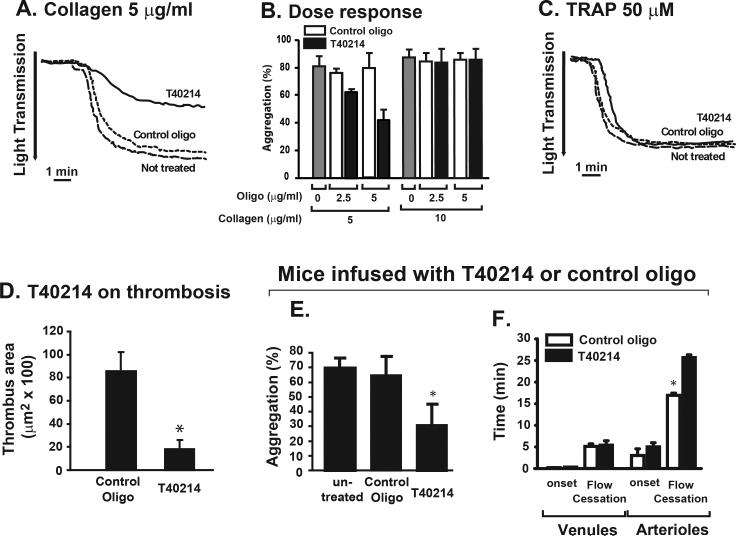Figure 2.
Effects of T40214 on human and mouse platelets: PRP was incubated with the PEI-coupled T40214 or the scrambled control oligonucleotide for 1 hrs at 37°C and then induced to aggregate with 5 μg/ml or 10 μg/ml of collagen at two doses of T40214 or control oligonucleotide (A & B). Platelet aggregation was also induced by 50 μM of TRAP in the presence of either T40214 or the control scrambled oligonucleotide (C). Citrated blood treated with T40214 or the control oligonucleotide was perfused over immobilized collagen for 1 min at a flow rate of 1 ml/min and areas covered by platelet thrombi were measured (D, n = 6, *p < 0.01). Male C57BL/J6 mice (n = 8) were infused with 1 mg/kg of PEI-coupled T40214 or the control oligonucleotide daily for 3 days. PRP was then tested for platelet aggregation induced by 0.75 μg/ml collagen (E, n = 5, *p < 0.01). Thrombus formation after photochemical injury was examined by the onset and time to closure of venules and arterioles of cremaster muscles of mice infused with T40214 or the control oligonucleotide (F, n = 8, *p < 0.01).

